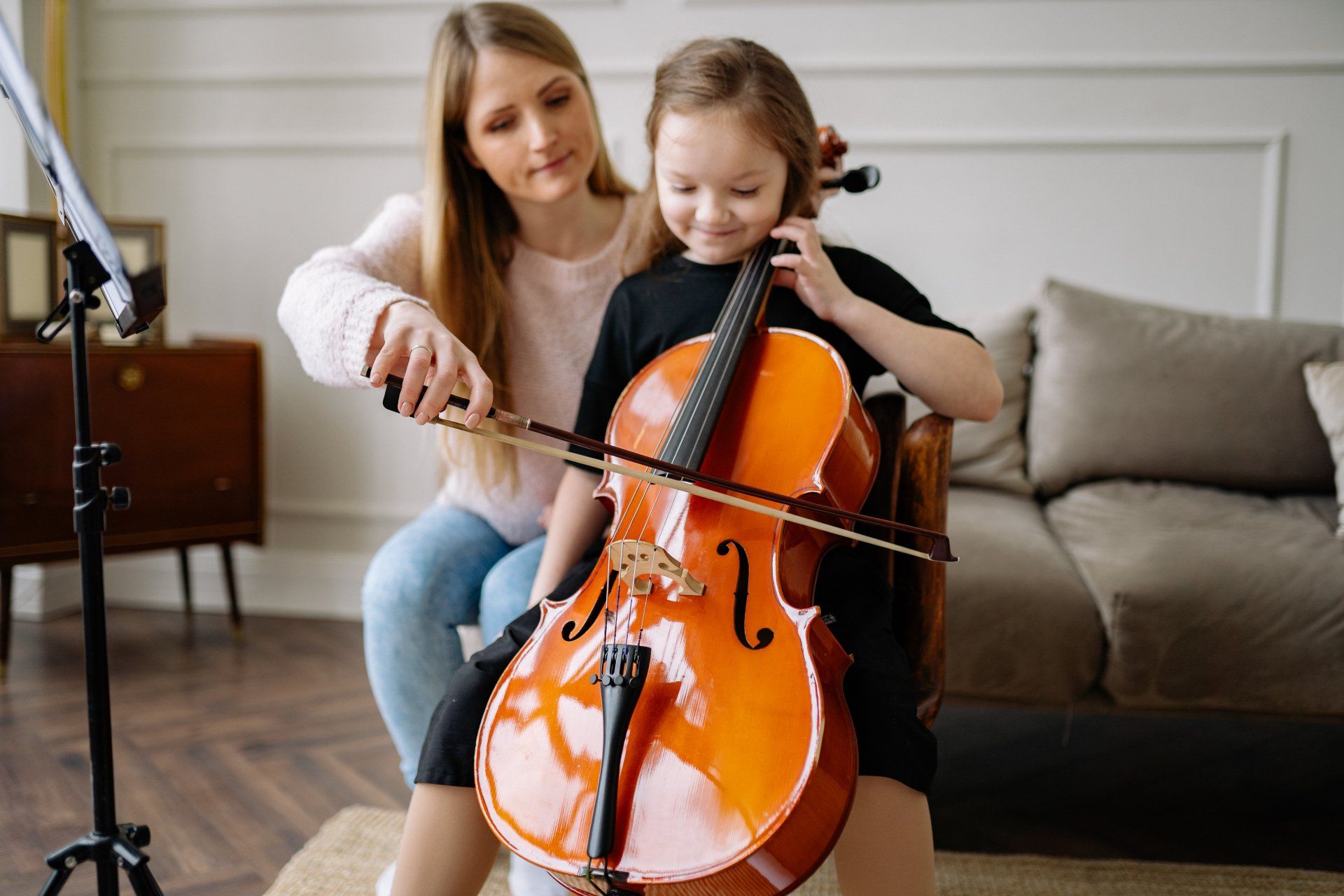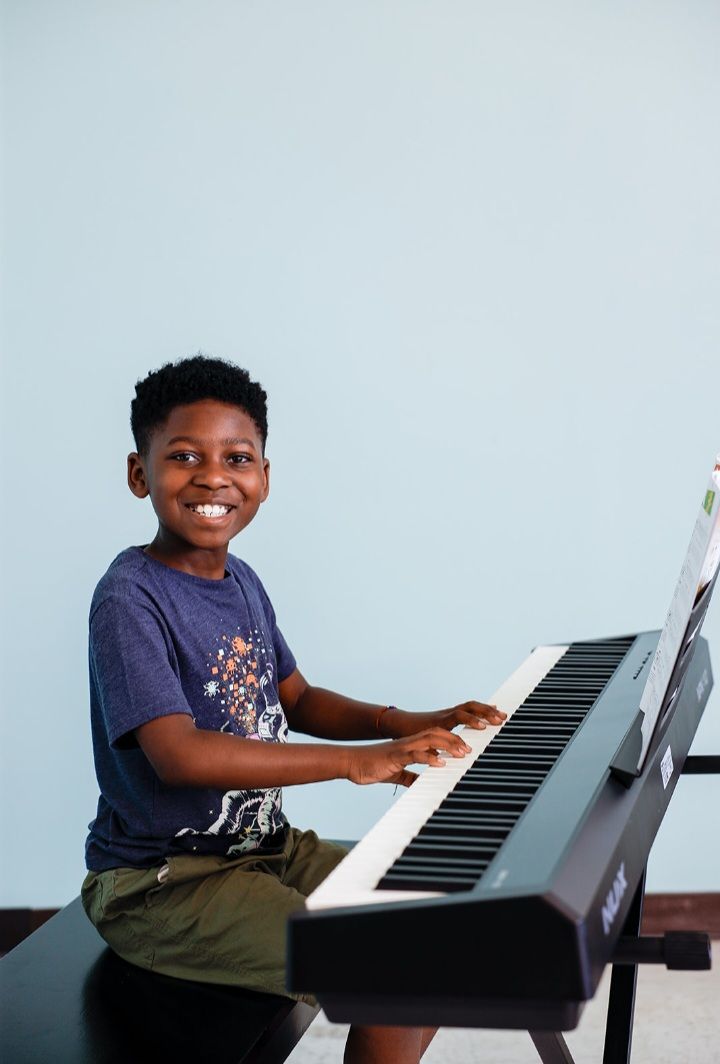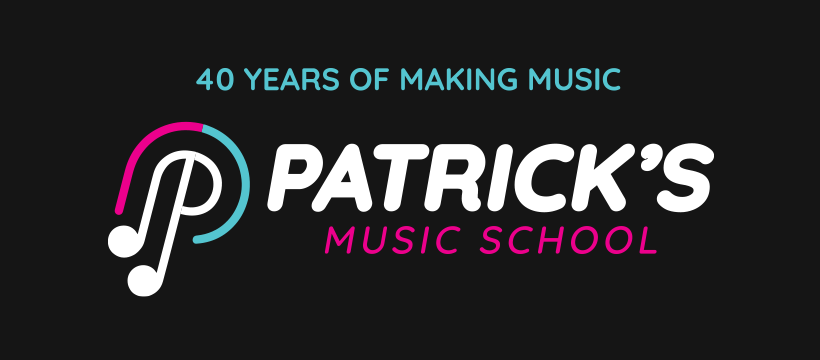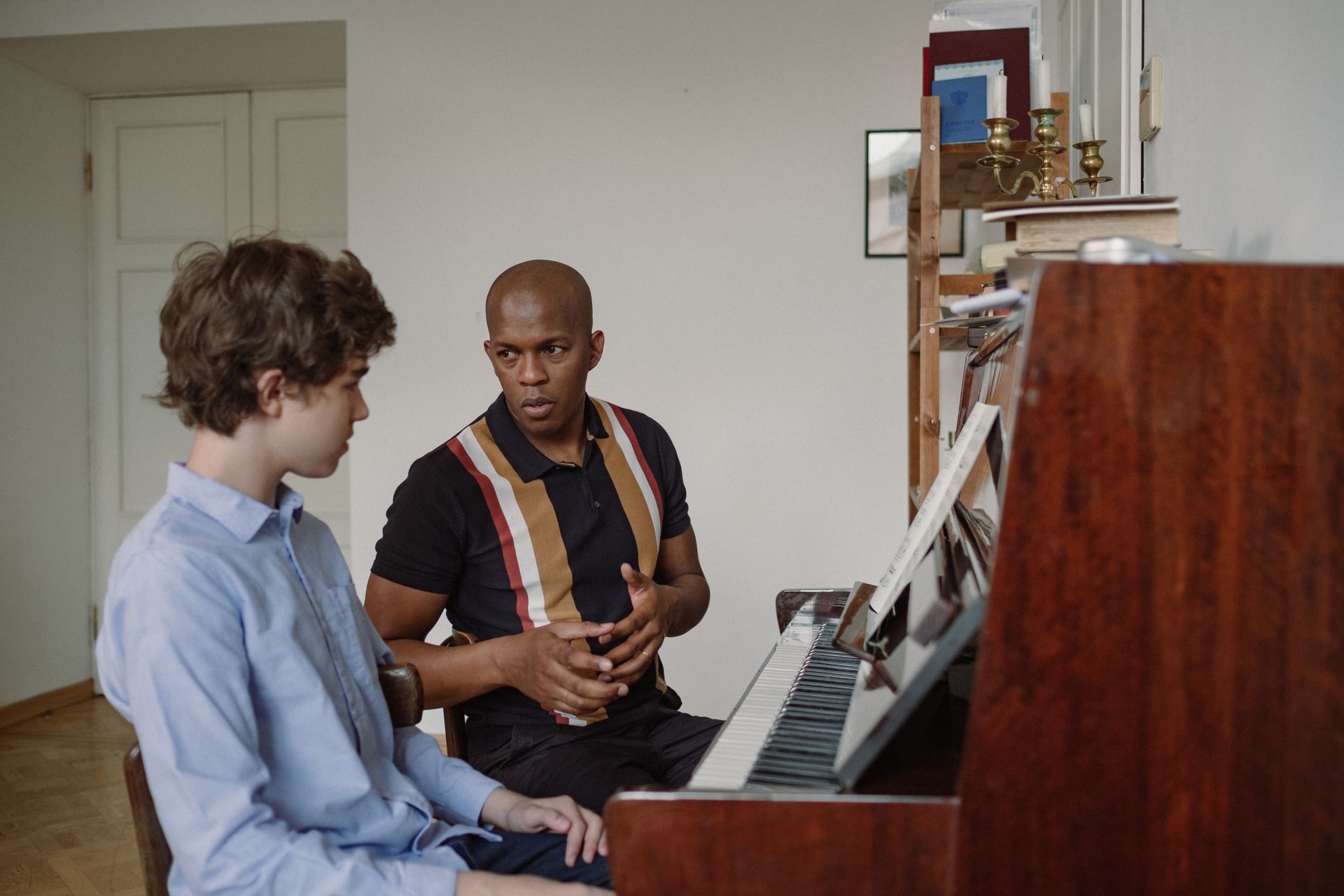Music Lessons for Kids Fostering a Love for Music from a Young Age
How to Foster a Love for Music from a Young Age
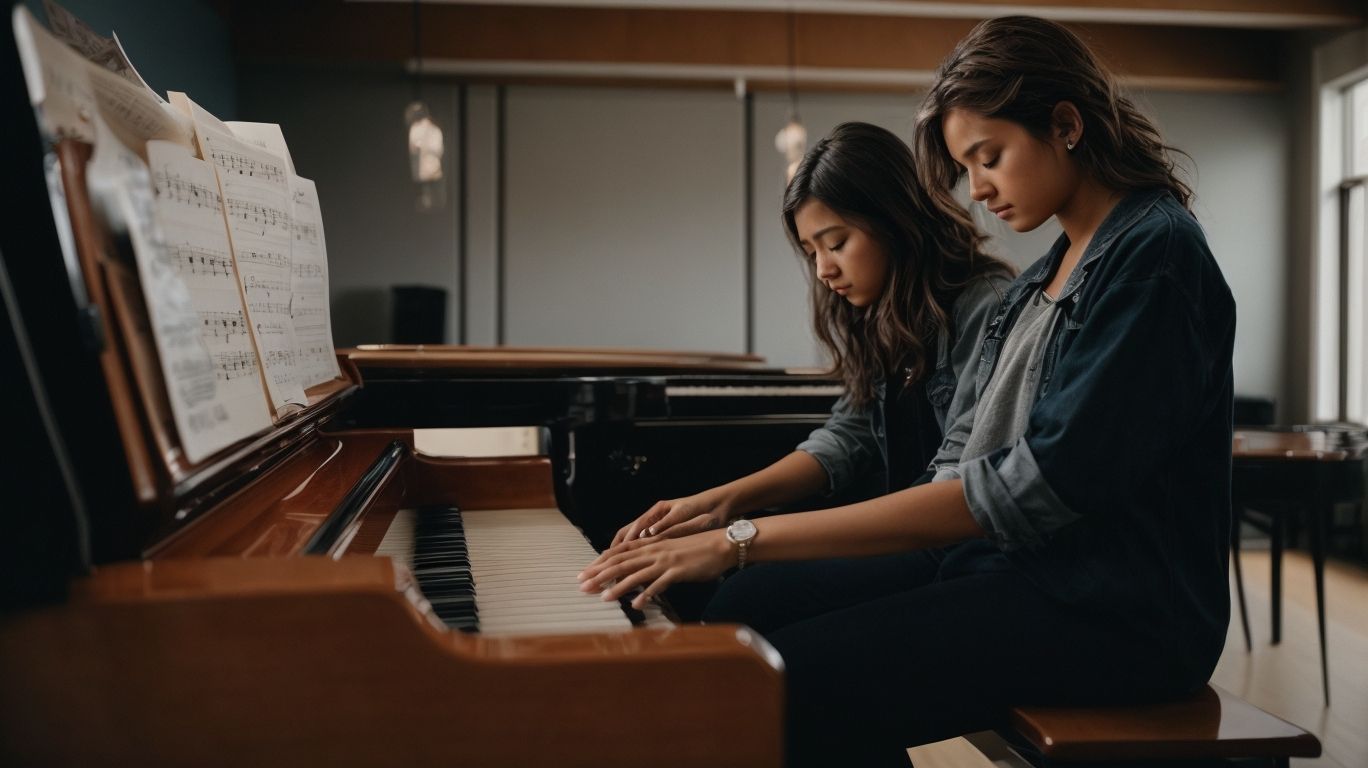
Music has the power to transcend language and cultural barriers and is an essential part of our lives. Introducing music to children at a young age not only fosters a love for this art form but also provides numerous developmental benefits. From enhancing brain development to boosting self-confidence, music lessons offer a well-rounded education for children.
In a study conducted by the University of Miami's Frost School of Music, it was found that children who participated in music lessons showed a significant increase in IQ, language, and reading skills.
There are various types of music lessons available for kids, including:
- Instrumental lessons
- Vocal lessons
- Music theory lessons
- Group or private lessons
Each type offers unique benefits and caters to different learning styles. Additionally, choosing the right music lessons for your child can be a daunting task.
Here are some points to consider when making this decision:
- Consider your child's interests and goals.
- Research different music schools and teachers.
- Take trial lessons.
- Consider your budget and schedule.
Moreover, fostering a love for music in your child can be done in various ways. Some tips to encourage your child's interest in music include listening to a variety of music together, attending live music performances, and encouraging creativity and exploration.
Overall, music lessons for kids not only provide a well-rounded education but also instill discipline, time management skills, and a lifelong love for music.
Key Takeaways:
- Music lessons for kids can enhance brain development, improve memory and cognitive skills, boost self-confidence, and teach discipline and time management.
- There are different types of music lessons for kids, including instrumental, vocal, and music theory lessons, and parents should consider their child's interests and goals when choosing the right lessons.
- To foster a love for music in their child, parents can listen to a variety of music together, attend live performances, encourage creativity and exploration, and make music a fun and positive experience.
Why Should Kids Take Music Lessons?
As parents, we want to provide our children with the best opportunities for growth and development. One activity that has been proven to have numerous benefits is learning music. In this section, we will explore the reasons why kids should take music lessons and how it can positively impact their lives. From enhancing brain development to teaching important life skills such as discipline and time management, music lessons can foster a love and appreciation for music from a young age.
Enhances Brain Development
Music lessons for children are crucial in enhancing brain development. Participating in musical activities stimulates multiple areas of the brain, promoting cognitive and emotional growth. Studies have shown that learning music can improve memory, reasoning, and problem-solving abilities, ultimately contributing to overall brain function and development.
To further cultivate a passion for music and promote brain development, parents can incorporate music into daily routines, encourage active listening, and provide opportunities for hands-on musical exploration.
Improves Memory and Cognitive Skills
- Enhances memory: Music lessons have been proven to improve memory and cognitive skills by teaching students to memorize musical pieces and enhancing their auditory processing abilities.
- Improves cognitive skills: Learning music requires the use of complex cognitive processes, including reading musical notes, understanding rhythm, and interpreting musical symbols, which can greatly improve overall cognitive abilities.
Boosts Self-Confidence and Self-Expression
- Encourages self-expression through musical creativity.
- Develops confidence by performing and sharing musical talents.
- Enables emotional expression through music composition and interpretation.
Pro-tip: Boost your child's self-confidence and self-expression by encouraging them to showcase their musical abilities in small family gatherings.
Teaches Discipline and Time Management
- Establish a consistent practice schedule to teach discipline and time management.
- Set specific goals for practice sessions to encourage efficient use of time.
- Encourage your child to take responsibility for their instrument and practice routine.
- Provide positive reinforcement to motivate adherence to the schedule.
I once knew a family whose child struggled with time management. After enrolling in music lessons, the structured practice routine improved not only their musical skills but also their ability to manage time efficiently in other aspects of life.
What Are the Different Types of Music Lessons for Kids?
As a parent, you want to give your child the best opportunities to explore their interests and develop new skills. One way to do this is through music lessons. But with so many options available, it can be overwhelming to choose the right type of music lessons for your child. In this section, we will break down the different types of music lessons for kids, including instrumental lessons, vocal lessons, and music theory lessons. We will also discuss the benefits of group lessons versus private lessons, so you can make an informed decision for your child’s musical journey.
Instrumental Lessons
- Assess your child's interest: Identify the instrument they are drawn to, considering their preferences and personality.
- Research music schools: Look for reputable schools that offer instrumental lessons with experienced instructors in the specific instrument your child wishes to learn.
- Visit the school: Take your child to visit the school and meet the potential instructor to gauge compatibility.
- Consider instrument cost: Evaluate the cost and practicality of owning or renting the instrument.
When my daughter expressed interest in music, we explored various options for instrumental lessons. After visiting different music schools and trying trial lessons, she discovered her love for the piano. With a patient and skilled instructor, she's excelling and finding joy in her musical journey!
Vocal Lessons
- Find a Qualified Instructor: Seek a vocal coach with experience in teaching children, focusing on vocal health and proper technique.
- Assess Your Child's Readiness: Make sure your child is physically and emotionally prepared for vocal training.
- Create a Supportive Environment: Cultivate a positive atmosphere at home, encouraging regular practice and exploration.
- Encourage Diverse Repertoire: Introduce your child to a variety of music genres and styles, expanding their vocal range and versatility.
Vocal lessons have been an essential component of music education for centuries, with origins dating back to ancient Greek and Roman societies. These lessons were initially reserved for the upper class, emphasizing the development of vocal skills and appreciation for music.
Music Theory Lessons
- Start with fundamental elements like notes, rhythm, scales, and chords.
- Learn Notation: Grasp the concept of reading and writing music through sheet music and musical symbols.
- Explore Composition: Delve into creating melodies, harmonies, and understanding musical forms.
- Study Harmony and Counterpoint: Learn about chord progressions, musical structure, and the relationship between different musical lines.
- Understand Musical Analysis: Analyze music pieces to comprehend how they are constructed and the techniques used.
Group Lessons vs. Private Lessons
Group Lessons
- Provide opportunities for social interaction and teamwork
- Offer a more affordable option compared to private lessons
- Encourage peer motivation and the opportunity to learn from others
Private Lessons
- Offer personalized attention and focused instruction tailored to the individual
- Allow for flexibility in lesson structure and pacing
- Cater to individual learning styles and goals
How to Choose the Right Music Lessons for Your Child?
As a parent, you want to provide your child with opportunities to explore their interests and develop new skills. One way to do this is through music lessons. However, with so many options available, it can be overwhelming to choose the right one for your child. In this section, we will discuss the key factors to consider when selecting music lessons for your child. From their interests and goals to your budget and schedule, we will cover all the essential aspects to help you make an informed decision.
Consider Your Child's Interests and Goals
- Assess your child's musical interests and aspirations to determine the most suitable music genre or instrument.
- Engage your child in a conversation about their musical preferences and desires.
- Observe your child's reactions to different music styles and instruments to gauge their inclinations.
- Consider enrolling your child in trial music lessons to explore various options based on their inclinations and goals.
Research Different Music Schools and Teachers
- When researching different music schools and teachers, be sure to check their reputation and credentials.
- Verify that their teaching methods and curriculum align with your child's learning style and goals.
- Observe the interaction between teacher and student during a trial lesson to assess compatibility.
- Consider the location and schedule convenience for practicality.
Seek recommendations, read reviews, and prioritize personalized attention for your child's musical journey when choosing a music school or teacher.
Take Trial Lessons
- Research potential music schools and teachers offering trial lessons.
- Speak with the school or teacher to schedule a trial lesson for your child.
- Observe how your child interacts with the instructor and the learning environment during the trial lesson.
- Consider your child's comfort, engagement, and enthusiasm while participating in the trial lesson.
Consider Your Budget and Schedule
- Assess your financial resources to determine the amount you can allocate to music lessons.
- Consider your budget and schedule when deciding on the frequency and duration of lessons that best fit your child's schedule and your commitments.
- Explore various payment options, such as monthly packages or semester fees, to align with your budget.
- Review your family calendar to select lesson timings that harmonize with other activities and responsibilities.
How to Foster a Love for Music in Your Child?
As a parent, you want to cultivate a love for music in your child from an early age. But how can you go about doing that? In this section, we will discuss several strategies to help foster a love for music in your child. From listening to a variety of music together to attending live performances, encouraging creativity and making music a fun experience, these methods will help your child develop a deep appreciation for music and all its wonders. Let's dive in and explore how you can ignite a passion for music in your child.
Listen to a Variety of Music Together
- Listen to a Variety of Music Together, including diverse genres and eras such as classical, jazz, pop, and world music.
- Discuss the unique features of each genre, such as rhythm, melody, and instruments used.
- Engage in music-related activities, such as dancing, singing, or playing along with instruments.
- Encourage open discussions about personal preferences and emotional responses to different musical styles.
Attend Live Music Performances
- Research local venues hosting a variety of live music performances.
- Discuss with your child their preferences for the type of performances they would like to attend.
- Plan regular outings to concerts, music festivals, or community events.
- Encourage your child to interact with the performers and ask questions about the music.
Encourage Creativity and Exploration
- Provide a variety of musical instruments for your child to experiment with.
- Encourage your child to compose their own music and explore different genres.
- Create a dedicated space for music exploration and creativity in your home.
- Enroll your child in music classes that focus on improvisation and creative expression to foster their creativity and exploration.
Pro-tip: Allow your child to make mistakes and experiment freely during their musical journey to encourage their creativity and exploration.
Make Music a Fun and Positive Experience
- Encourage creative expression through fun music games and activities.
- Provide positive reinforcement and praise during practice and performances to make music a positive experience.
- Create a supportive and nurturing environment for learning and exploration of music.
- Collaborate with other young musicians to make music a social and enjoyable experience.
6. Are there any resources available to help my child take the next step in their music education?
- Yes, there are many resources available, such as the New England Board of Higher Education and the National Association for Music Education. These organizations offer information on music education programs and classes for children of all ages. Additionally, your child's favorite teacher or local choir may also offer resources for formal music lessons.
Frequently Asked Questions
-
1. How can I foster my child's love for music from a young age?
There are several effective ways to foster a love for music in your child, including singing to and with them, listening to live music together, and attending music classes. These experiences can help your child internalize melodies and rhythms, develop audience etiquette, and immerse themselves in music from a young age.
-
2. Can singing and dancing with my child really have long-term benefits?
Yes! Studies have shown that music can have a positive impact on a child's learning pathways, language acquisition, fine muscle coordination, and even goal setting. Consistent exposure to music can also improve time management skills and academic success.
-
3. How can I introduce my child to live music making?
One way is to attend family-friendly musical events or concerts, such as the children's concerts by the Queensland Symphony Orchestra or performances by family-friendly bands at places like Eat Street Northshore. This can be a fun way to introduce your child to the joy of live music.
-
4. Is it important for me to lead by example in fostering my child's love of music?
Absolutely! Children often mimic the behaviors of those around them, so it's important for parents and caregivers to model a love for music. This can include playing an instrument, participating in vocal performances, or simply listening to music often.
-
5. When is the best time to start fostering a love for music in my child?
You can start from the day your child is born and continue throughout their childhood and into adulthood. From singing lullabies and playing music during bath time to attending concerts and taking music classes, every experience can help foster a love of music in your child.
